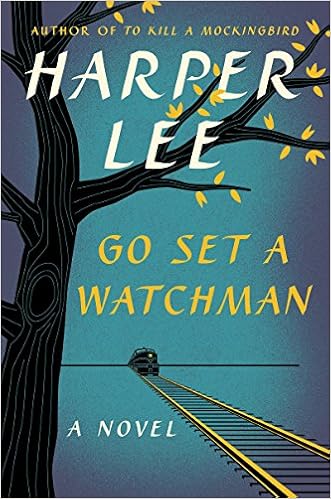From the back cover of Go Set a Watchman, "Every man's island, Jean Louise, every man's watchman, is his conscience." Ms. Lee takes the basis for this quote from the Bible, the book of Isaiah. Harper Lee also wrote To Kill a Mockingbird which was published in 1960 and won her the Pulitzer Prize.
Written in the mid-1950's, it is a testament to the struggle of our country to move into a new era. Go Set a Watchman did not see print until 2015. I want to tell you about the book, then I will tell you about the controversy and then you can make up your mind; which you can always do anyway. I feel having both angles will give you more to think about before you decide to read it. I would not have paid much attention, let alone read the book, if I had not seen news stories about the controversy and then noticed a copy of it laying on an end table in the home of a friend. She offered to have me borrow it and I accepted. I thought it would make a great post for my book review blog. So here it is.
Go Set A Watchman takes place in Maycomb, Alabama in the 1950's when the battle for equality facing black Americans was gaining momentum. Jean Louise "Scout" Finch was born and raised in Maycomb and is returning home from New York City, at the ripe old age of 26. Her father, Atticus, is getting older and she has come for a visit. Her childhood friend, Hank, is nowadays practicing law with Scout's father as his mentor. Not much else is the same as she remembers it. The Finches long time black cook, Calpurnia, who helped raise Scout and her brother Jem after her mother passed away, has retired. Atticus has arthritis and his sister Alexandra lives with him and has taken over the duties that Calpurnia used to perform. Now, there are other family relations and skeletons which do not need to be drug out here. It looks, from the outside, that Maycomb is still the same but, as she will find out, things are changing. The book moves along in a fairly easy to read way until about halfway through. That is when Jean Louise happens upon a paper lying amongst the Sunday papers on an end table in the living room entitled "The Black Plague." She reads it and is utterly devastated, incensed, shocked and heartbroken. She immediately runs to the county courthouse where she slips into the "blacks only" balcony to observe her father at the Citizens Council meeting at a table with other citizens whom she thought cared for the black community. The next day, she has a grotesquely elaborated, emotional confrontation with her father, in which she comes to the realization that she has been "color blind' all her life. After "listening" to her harangue Atticus for 25 pages, which I could hardly read through for the livid emotional diatribe that it was, I was over this book. How can you be that old, living in the 50's, raised in the South, and not know that there are conflicting attitudes about black people and their "place"? I suppose there were people like that who were sheltered, or sheltered themselves from that reality. I finished the book just to see if she would come to terms with life as we know it before the last page, and she did. There are mental exercises and concessions and awareness of reality that take place in her head which bring her to a state of realistic acceptance. It was exhausting.
Various news reports from a bevy of sources say that this book was a grab for money on the part of Ms. Harper's lawyer Tonja Carter. The book was written before To Kill a Mockingbird and it is said that it is actually a rough draft of that book. It disappeared and she thought it was lost when Tonja found it attached to back of an old manuscript of To Kill a Mockingbird. She was thrilled that it was found and would be published. Her last days were spent in a nursing home where she passed away February of this year, just after the book was published, at the age of 89. It is said by HarperCollins that it serves as an "essential companion to To Kill a Mockingbird, adding depth, context, and new meaning to an American classic." You could say that, but if you have read To Kill a Mockingbird, you know that it is about the plight of blacks in the South and a good lawyer defending a good black man, despite the color of his skin. You don't need Go Set a Watchman to add that to your understanding.
You can read more about the controversy at The Guardian/Harper Lee new novel
I give Go Set a Watchman two and a half stars.
Thanks so much for being here!!
Jeri~
Picture of Harper Lee when the book was released and when she wrote To Kill a Mockingbird


